The Covered Bridges
As the Covered Bridge Capital of the West, Cottage Grove is home to six covered bridges including the last remaining covered railroad bridge west of the Mississippi River. The Chambers Railroad Bridge is on the National Registry of Historic Places and was fully restored in 2011. There is also a State of Oregon Covered Bridge Scenic Byway as well as a newly designated Covered Bridges Scenic Bikeway which is incredibly popular with cyclists and pedestrians alike. The covered bridges can be toured easily and are less than 20 minutes from the Historic Downtown area.
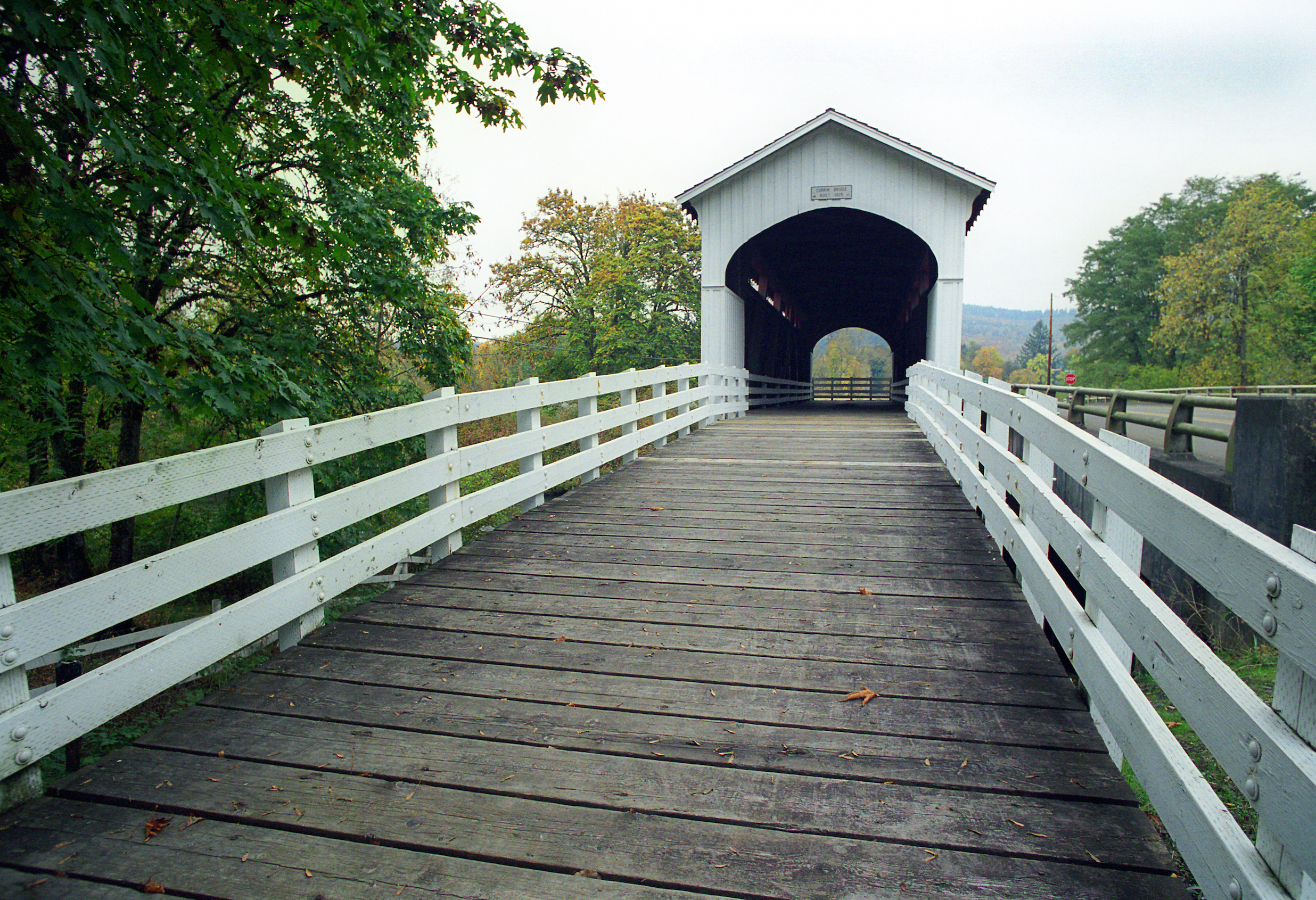
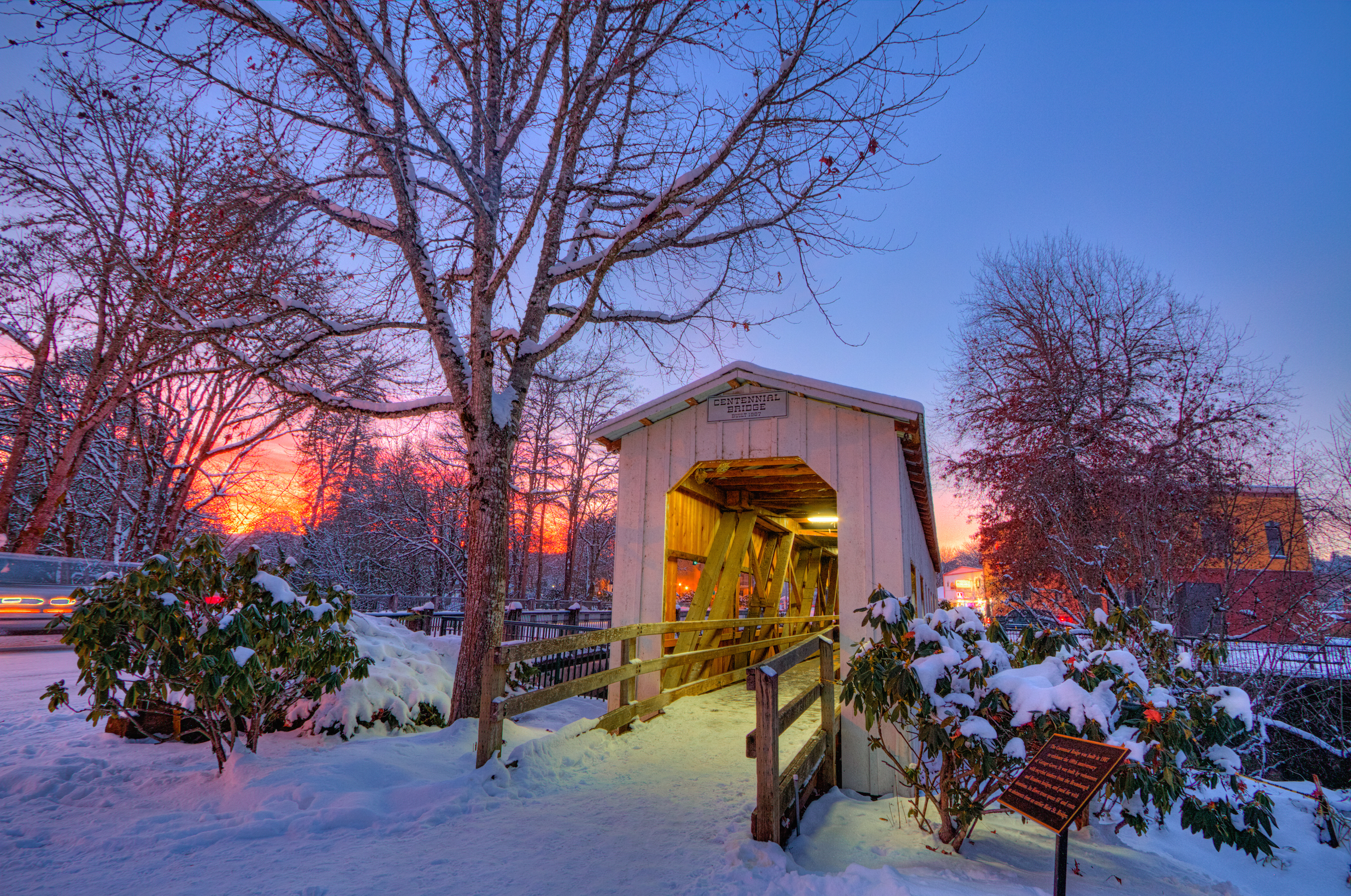
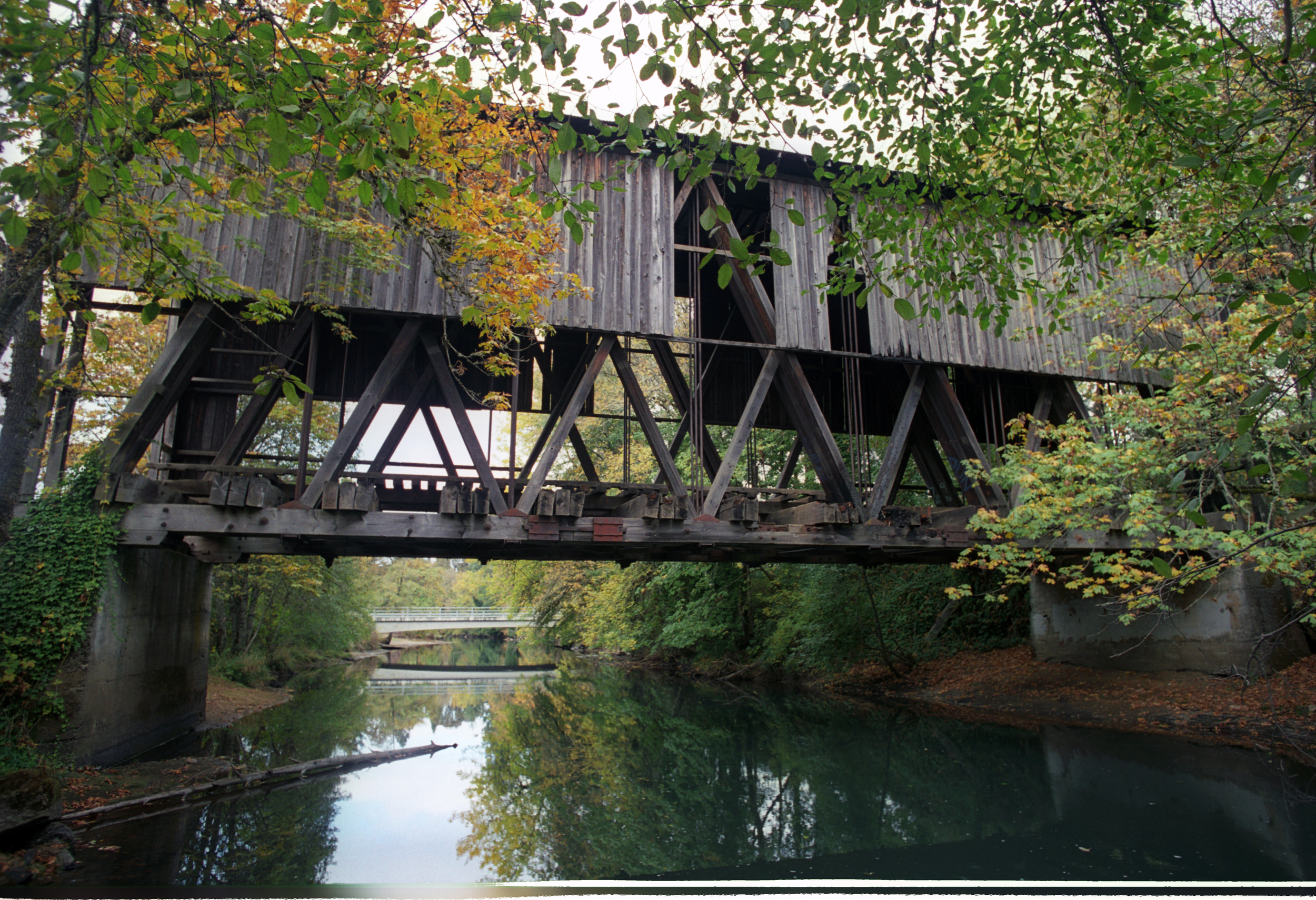
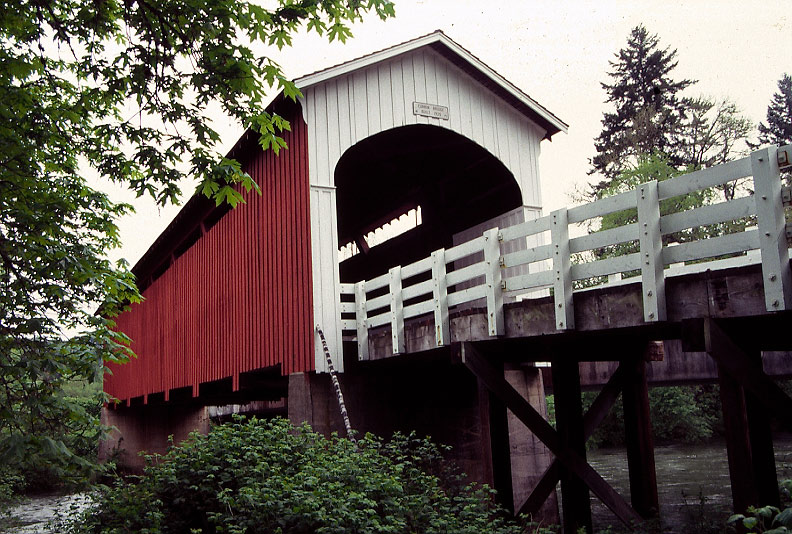
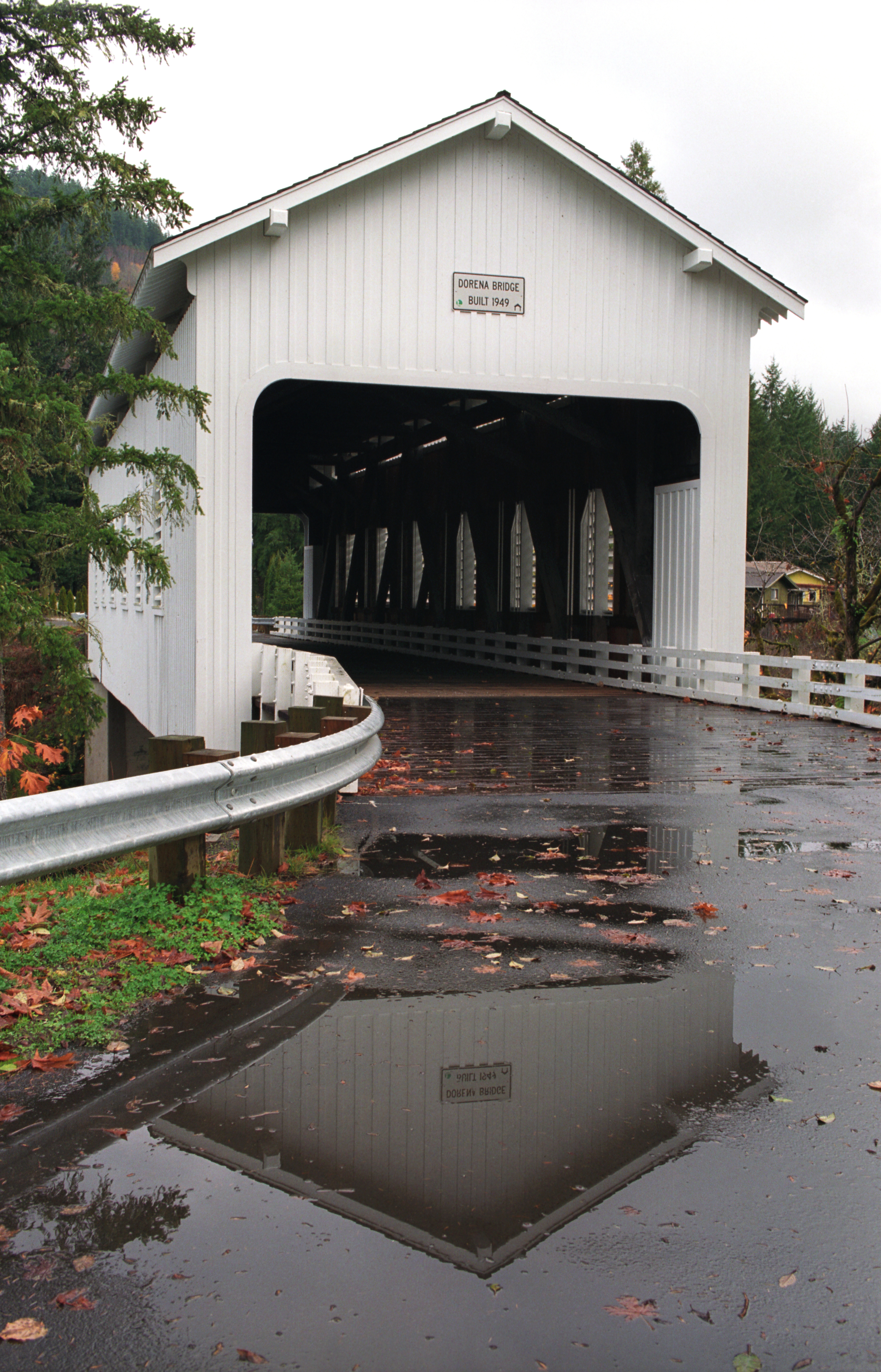
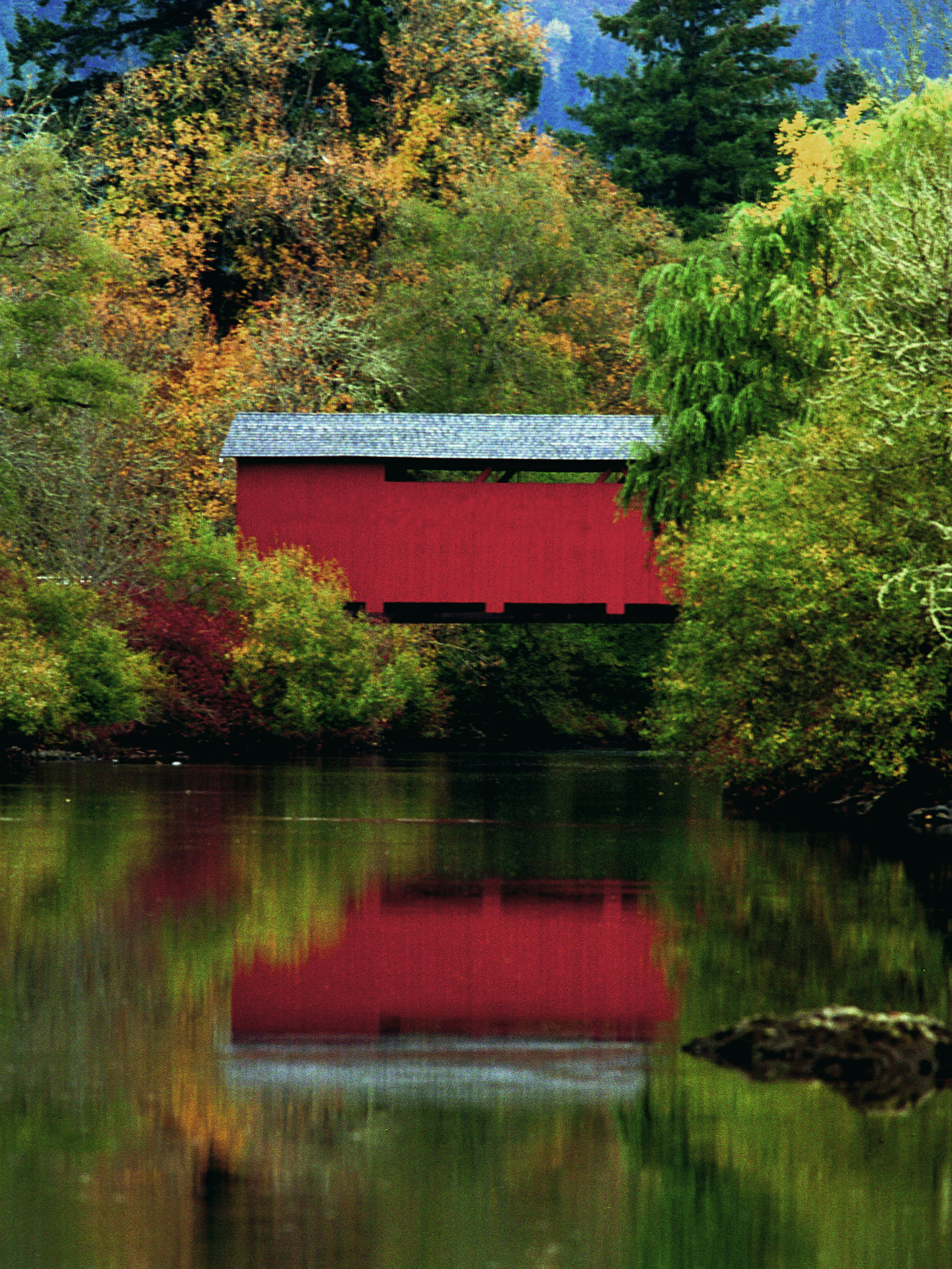
Centennial Bridge
This bridge was constructed in 1997 by volunteer labor to celebrate Cottage Grove’s Centennial. Materials came from two Lane County bridges that had been demolished. It rests on abutments of the old Main Street Bridge, which stood until the 1950s.
Dorena Bridge
Constructed in 1949 and restored in 1996, this bridge was built after the construction of Dorena Dam on the Row River, forming the present day lake. The Dorena Bridge once tied the roads on the north and south sides of the lake. Now closed to traffic, the bridge is a popular wedding site.
Stewart Bridge
Constructed in 1930 and restored in 1996, this structure has semicircular portal arches, ribbon openings at the eaves, and decorative S-curve brackets. The deep water below the bridge is considered one of the best swimming holes in the county.
Currin Bridge
Constructed in 1925 and restored in 1995, this bridge features white portals and red sides. Currin Bridge replaced an earlier covered bridge built in 1883 by prominent local bridge builder, Nels Roney.
Mosby Creek bridge
Constructed in 1920 and restored in 1990, this is the oldest bridge in Lane County and its single car lane remains open to traffic today. The structure has semi-circular portal arches, ribbon openings on the roof line of each side, and board-and-batten cladding on the exterior.
Chambers Bridge
The only covered railroad bridge west of the Mississippi! This bridge was built in 1925 by lumberman J.H. Chambers in order to cross the Coast Fork of the Willamette River from his sawmill to the timberlands west of town. Unfortunately, it was in use for just seven years before the sawmill burned down. The bridge was acquired by the city of Cottage Grove and restoration through local funding and a National Historic Covered Bridge Restoration Grant began in the summer of 2010. It is now open to the public once again.
Swinging Bridge
Located a half-mile upstream from Centennial Bridge, Swinging Bridge was built for foot and bicycle traffic and was mostly used by children crossing the Coast Fork to get to school. The present bridge is at least the fourth built on this site. Earlier versions of the bridge could be made to swing side to side—hence its name!

